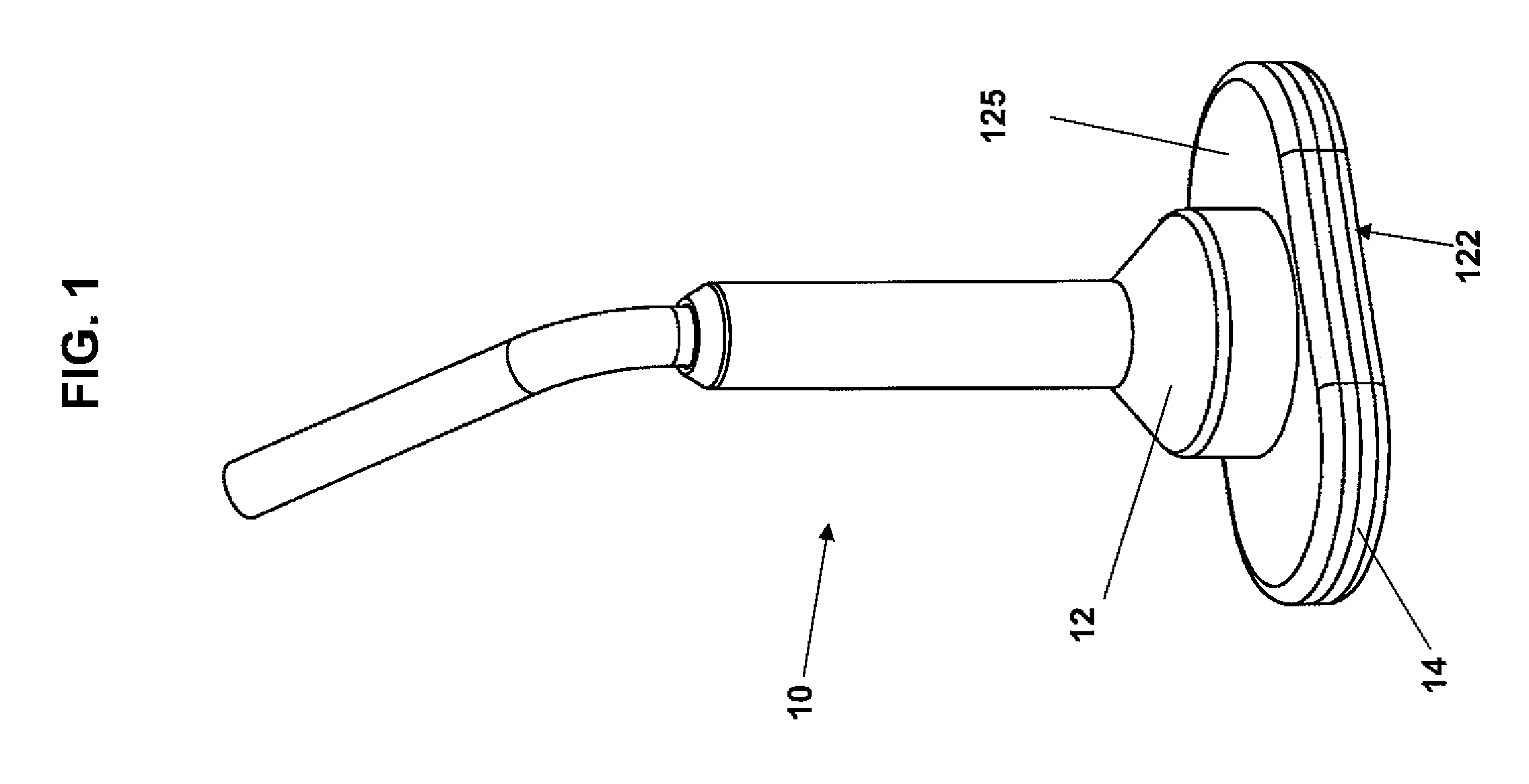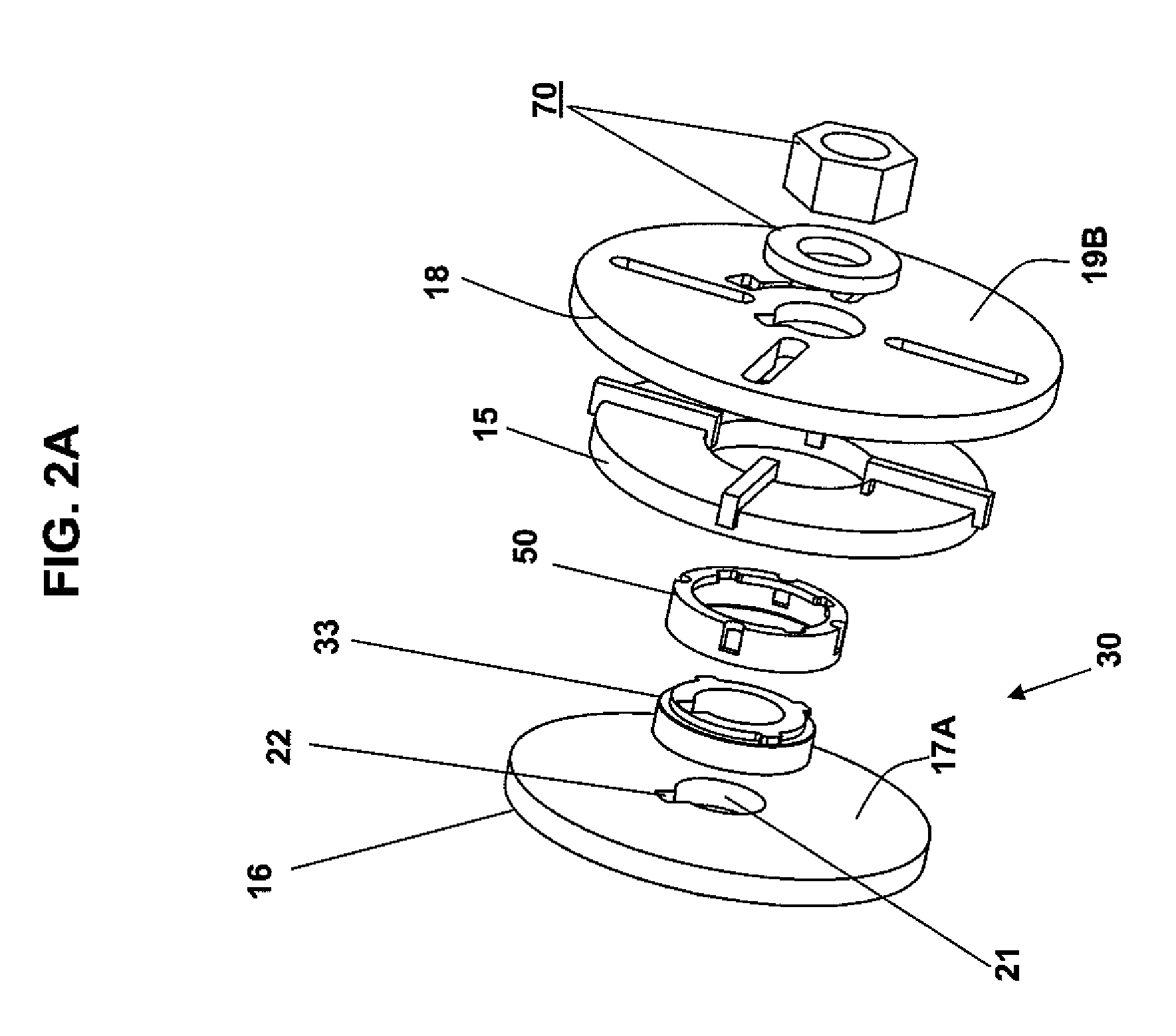Transcranial magnetic stimulation induction coil device and method of manufacture
a technology of induction coil and transcranial magnetic stimulation, which is applied in the direction of transformer/inductance casing, electrotherapy, therapy, etc., can solve the problems of generating a substantial amount of heat energy relatively quickly, reducing the time that a patient undergoing tms must endure such procedure, and resisting losses, etc., to reduce the rate of heat energy transfer, reduce the absorption rate of heat energy, and reduce the conductivity of phase transition material.
- Summary
- Abstract
- Description
- Claims
- Application Information
AI Technical Summary
Benefits of technology
Problems solved by technology
Method used
Image
Examples
Embodiment Construction
[0031]FIG. 1 is an exemplary embodiment of a TMS coil device 10, in accordance with the present invention, including a casing 12 containing induction coil windings 15 of predetermined size and shape, an exemplary embodiment of which is described in detail in the text accompanying the discussion of FIGS. 2-4, and substantially fixed, with a high level of precision, at a predetermined location within and orientation in relation to a bottom portion 14 of the casing 12. The casing 12 and an interior region of the bottom portion 14 of the casing 12 have a predetermined size and shape, as discussed in detail below in the text accompanying the discussion of FIGS. 4-5, such that the coil windings 15, when installed within the bottom portion 14 of the casing 15, is substantially precisely fixed at a predetermined location within and orientation in relation to the bottom portion 14 of the casing 12, and thus at a predetermined location and orientation in relation to a bottom outer surface 122...
PUM
| Property | Measurement | Unit |
|---|---|---|
| thickness | aaaaa | aaaaa |
| temperature | aaaaa | aaaaa |
| thickness | aaaaa | aaaaa |
Abstract
Description
Claims
Application Information
 Login to View More
Login to View More - R&D
- Intellectual Property
- Life Sciences
- Materials
- Tech Scout
- Unparalleled Data Quality
- Higher Quality Content
- 60% Fewer Hallucinations
Browse by: Latest US Patents, China's latest patents, Technical Efficacy Thesaurus, Application Domain, Technology Topic, Popular Technical Reports.
© 2025 PatSnap. All rights reserved.Legal|Privacy policy|Modern Slavery Act Transparency Statement|Sitemap|About US| Contact US: help@patsnap.com



